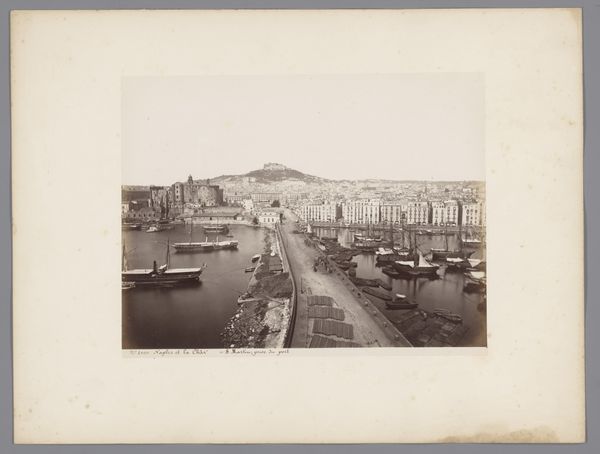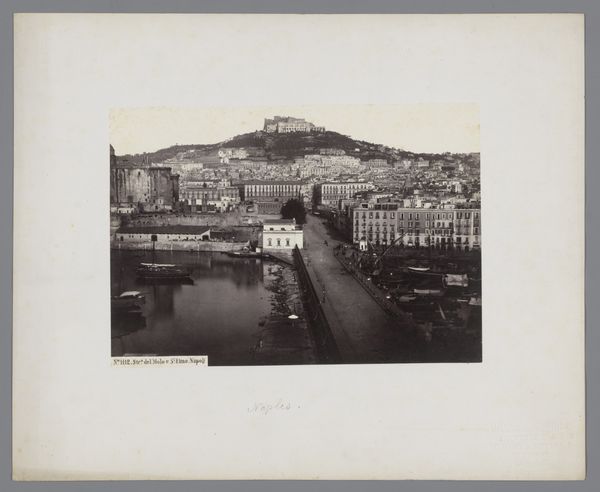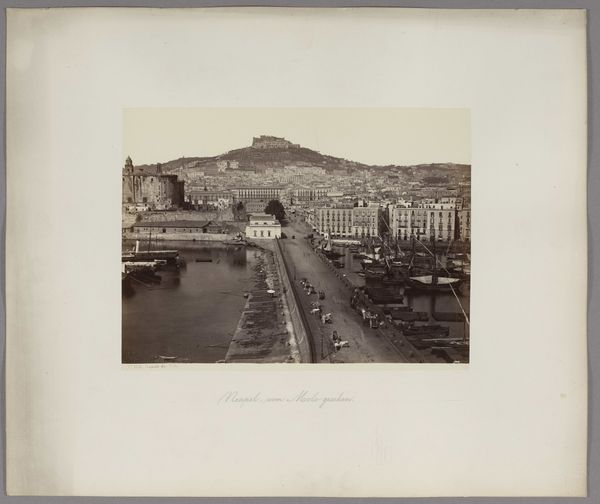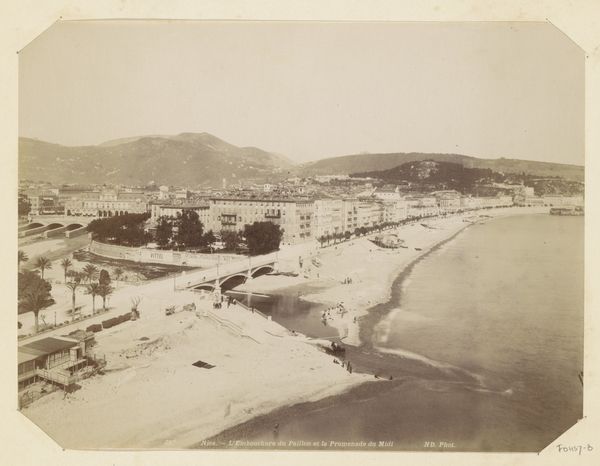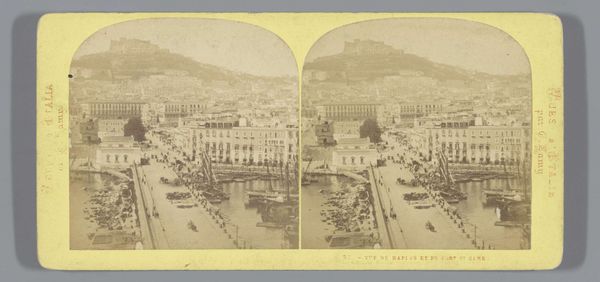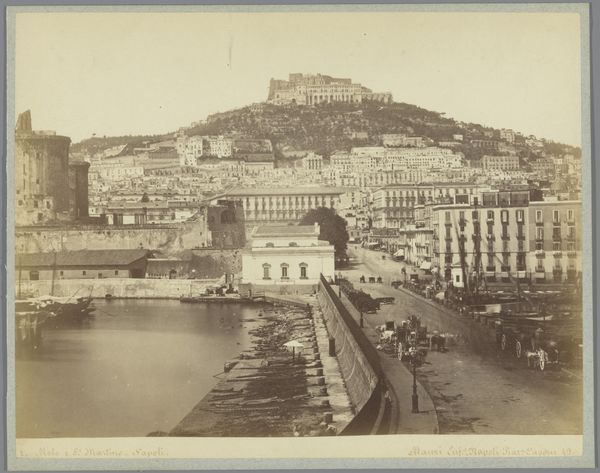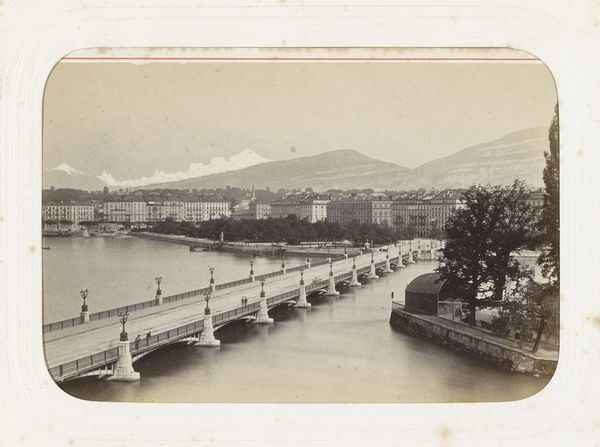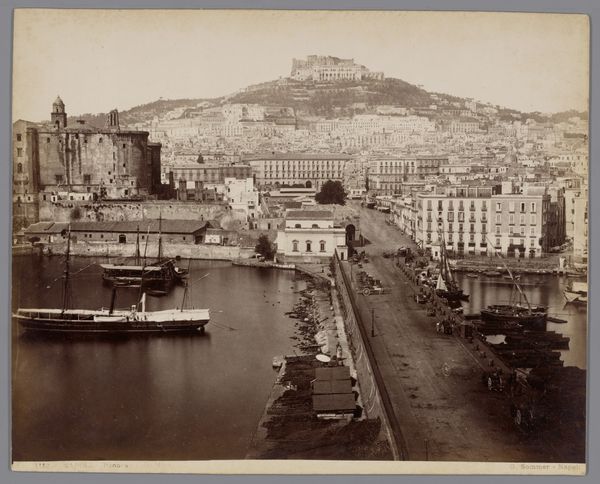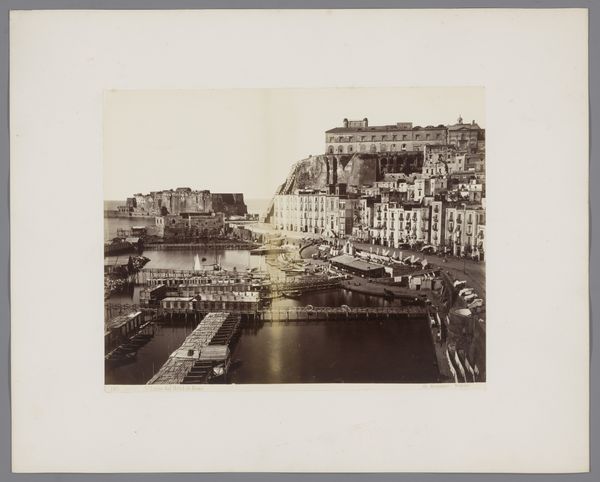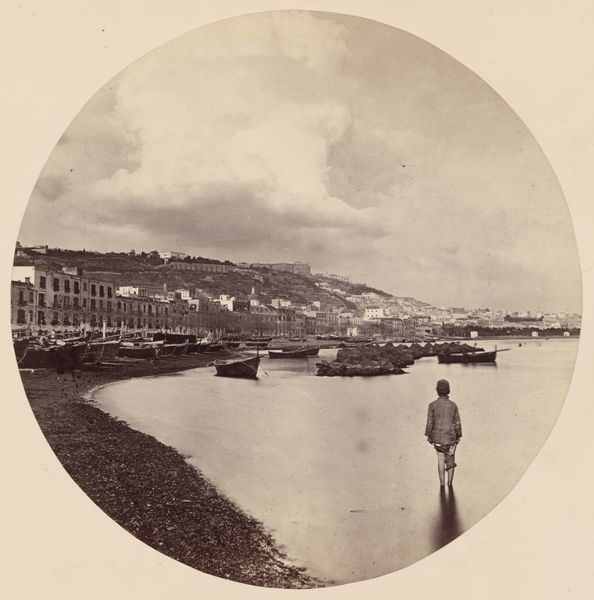
Dimensions: height 108 mm, width 143 mm
Copyright: Rijks Museum: Open Domain
Curator: This albumen print captures a panoramic vista of Naples, viewed from the Castello Nuovo, sometime between 1860 and 1900. It’s credited to Roberto Rive and offers a fascinating look at the city's harbor. Editor: It has this remarkably tranquil feel. The light, the stillness of the water…despite being a busy port city, there's a quiet dignity about it. The image certainly romanticizes the past through its tones. Curator: Absolutely. The presence of sailing ships alongside more modern vessels signifies a city straddling two eras. How the city sees itself on the cusp of great social change is central here. There’s a subtle interplay of power too; we observe the bustling harbor but also the stoic architecture as a counterpoint to activity in the bay. Editor: Ships often stand as potent symbols of transition. Consider how that fleet might trigger thoughts of trade, empire, migration, all loaded words reflecting different interests in Neapolitan society. But beyond this, it evokes a grand and historic past in a generalized and therefore, idealized manner. Even the position of the castle suggests this theme; what's kept changes and what endures, a symbol of what cannot be replaced, as if looking at the rest of the world beneath it. Curator: Indeed. These images gained popularity, in part because they depicted a society already on the verge of significant change. It captured a specific moment in time and acted like a collective memorial. The fact that the city becomes accessible, viewable from an imagined single point becomes interesting from a post-enlightenment perspective, one which this print enabled. The city as commodity or object. Editor: It's so interesting that you bring up commodification. Thinking about the print, with the architectural order mirrored in the rhythm of the ships, it presents this incredibly digestible version of 'Naples'. The artist shows a serene place with controlled, legible grandeur to the masses, which must be somewhat contrasted from a historical picture that's far messier. The ships form more than a function. Instead, they create a sort of frame within a frame for those buildings on the horizon. They’re active symbols, full of dynamism and allurement for anyone who buys it. Curator: Fascinating perspective! It reminds me how powerfully constructed images reflect cultural ideals, social aspirations, and how it all becomes interwoven in these seemingly still photographs. Editor: Exactly! This little piece provides a portal into understanding an imagined idea that Naples held for the global consciousness, an exciting window to social dreams!
Comments
No comments
Be the first to comment and join the conversation on the ultimate creative platform.
